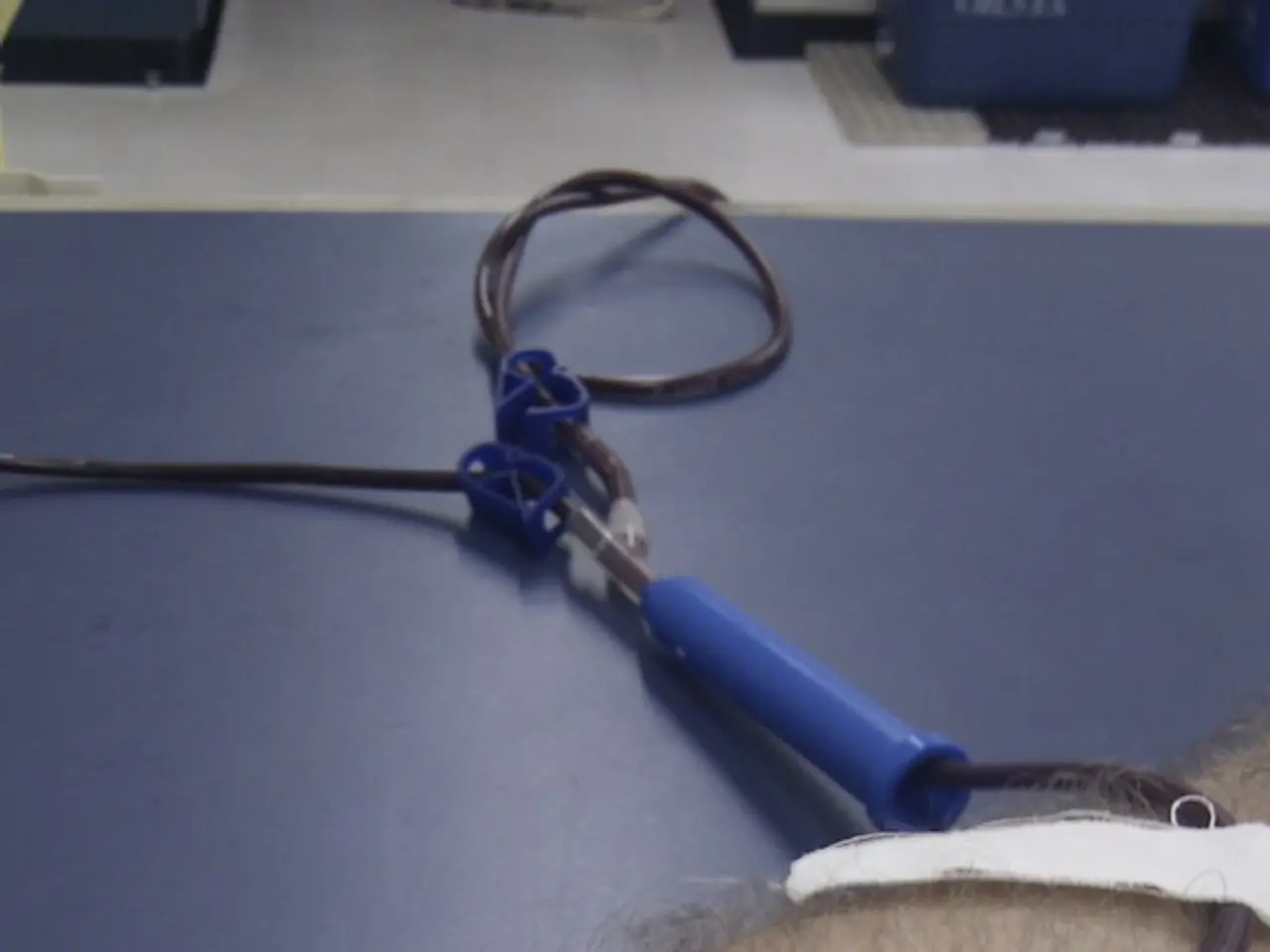Medical Examination of Kidney: Process, Outcomes, and Hazards
A kidney biopsy is a crucial diagnostic procedure that involves the removal of tiny pieces of kidney tissue for examination under a microscope. This process helps in diagnosing various kidney-related issues, such as high levels of protein in the urine, persistent blood in the urine, and kidney dysfunction.
The most common type of kidney biopsy is a percutaneous biopsy, where doctors insert a biopsy needle through the skin into the kidney. This procedure carries potential complications, primarily related to bleeding, with hematoma formation being the most common. However, with careful ultrasound guidance during the procedure, post-biopsy monitoring of vital signs, and observing for signs of significant bleeding, these complications can be managed effectively.
Other risks associated with kidney biopsies include pain, rare severe bleeding requiring blood transfusion or interventional radiology procedures, and biopsy failure due to insufficient or non-diagnostic tissue sampling. Pregnant patients have a higher complication risk, especially bleeding requiring transfusion, demanding enhanced caution and consideration before performing kidney biopsies in pregnancy.
Before a biopsy, it's essential to inform the doctor about medications, dietary supplements, allergies, and make arrangements for a ride home. After the procedure, the person may rest in a recovery room, have their blood pressure, urine, and pulse monitored, and be watched for signs of internal bleeding.
In addition to diagnosing kidney problems, biopsies can help identify damaged parts of the kidney, check for signs of scarring, inflammation, or unusual quantities of immunoglobulin, and decide the best treatment option. They can also provide valuable information on how a person is responding to a treatment regimen.
The wait time for biopsy results may be a few days or longer, and a doctor will explain the results in a follow-up visit. The pathologist examines the tissue to reveal signs of disease or damage.
Certain drugs can increase the risk of bleeding and affect the response to anesthesia used in some procedures. Medications that can pose a problem include aspirin, nonsteroidal anti-inflammatory drugs, and blood thinners. Following the biopsy, the person may experience pain and soreness at the biopsy site, urine appearing slightly cloudy or pink for 24-48 hours, and may be advised to avoid contact sports, heavy lifting, and strenuous exercise for 2 weeks.
The costs for hospital-based biopsies range from $4,470 to $4,598, while office-based costs are $2,129. Complications occur in 1% or fewer of people who undergo a kidney biopsy, and risks include pain and bruising, damage to nearby organs, bleeding inside the body or at the biopsy site, infection, and other potential complications.
In some cases, a transjugular kidney biopsy, where a needle and catheter are inserted into a vein in the neck and guided to the kidney to obtain a sample, may be performed. For a laparoscopic kidney biopsy, general anesthesia is administered before making two small cuts in the back and inserting tools to obtain the kidney samples. An open kidney biopsy, where a small sample is removed with general anesthesia and the cut is stitched closed, is rare.
In conclusion, kidney biopsies are valuable diagnostic tools in managing kidney-related issues. With appropriate precautions and monitoring, the majority of complications are minor and manageable. It's crucial to discuss any concerns with a healthcare professional before undergoing a kidney biopsy.
References:
- Kidney International
- Mayo Clinic
- National Kidney Foundation
- American Society of Nephrology
- British Journal of Nephrology
- Chronic kidney diseases, such as chronic kidney disease (CKD), can be effectively diagnosed and managed with therapies and treatments through the examination of kidney biopsy results.
- The health and wellness of an individual can be significantly impacted by chronic kidney diseases, thus the importance of understanding medical-conditions related to the kidneys cannot be overstated.
- The science of kidney biopsies has advanced to the point where various methods, like percutaneous, transjugular, laparoscopic, and open biopsies, are available for diagnostic purposes.
- A kidney biopsy can help identify chronic kidney diseases, determining the best course of action for health-and-wellness management, and providing valuable insights into how the body responds to medical-conditions and treatments.




